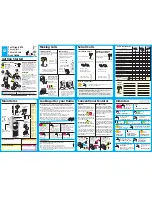
22
5. When re connecting appliances, reduce the load to that
which previously overloaded the generator.
Note.
The output of the DC from the generator is regulated
to a maximum of 5A.
If an appliance requires more than 5A to operate, the voltage
will reduce and the appliance will run less than 100% or will
not operate at all.
If 10A is required, it can be achieved by connecting a
separate battery to the battery charging socket and following
the steps in the section,
“ To use the DC appliance outlet
or USB outlet without the generator being operated”
(Page 18).
Carbon build up
Carbon build up can be a problem on generators as the
loading on the motor can vary considerably.
Carbon build up in the motor can be reduced by operating
the generator at approx. 75% of rated load for 25% of the
time the generator is used. ie, if the generator is used for 4
hours, run the generator for 1 hour at around 75% of rating.
This is only required if the generator has been used for less
than 50% or rated load.
If the generator is being used for solely charging a battery,
it is recommended to run the 240Vac at around 500W for
the generators up to 2000W and 1000W for the generators
between 2000 and 5500W if the charging cycle will be run
for many hours. When Charging is complete, try and run the
generator at around 75% of rated load for an hour or so.
Use unleaded fuel without ethanol.
Generator maintenance
Your generator should be kept clean and dry at all times. The
generator should not be stored or operated in environments
that includes excessive moisture, dust or any corrosive
vapours. If these substances are on the generator, clean with
a cloth or soft bristle brush. Do not use a garden hose or
anything with water pressure to clean the generator. Water
may enter the cooling air slots and could possibly damage the
rotor, stator and the internal windings of the generator head.
Summary of Contents for G1100KU
Page 29: ......








































